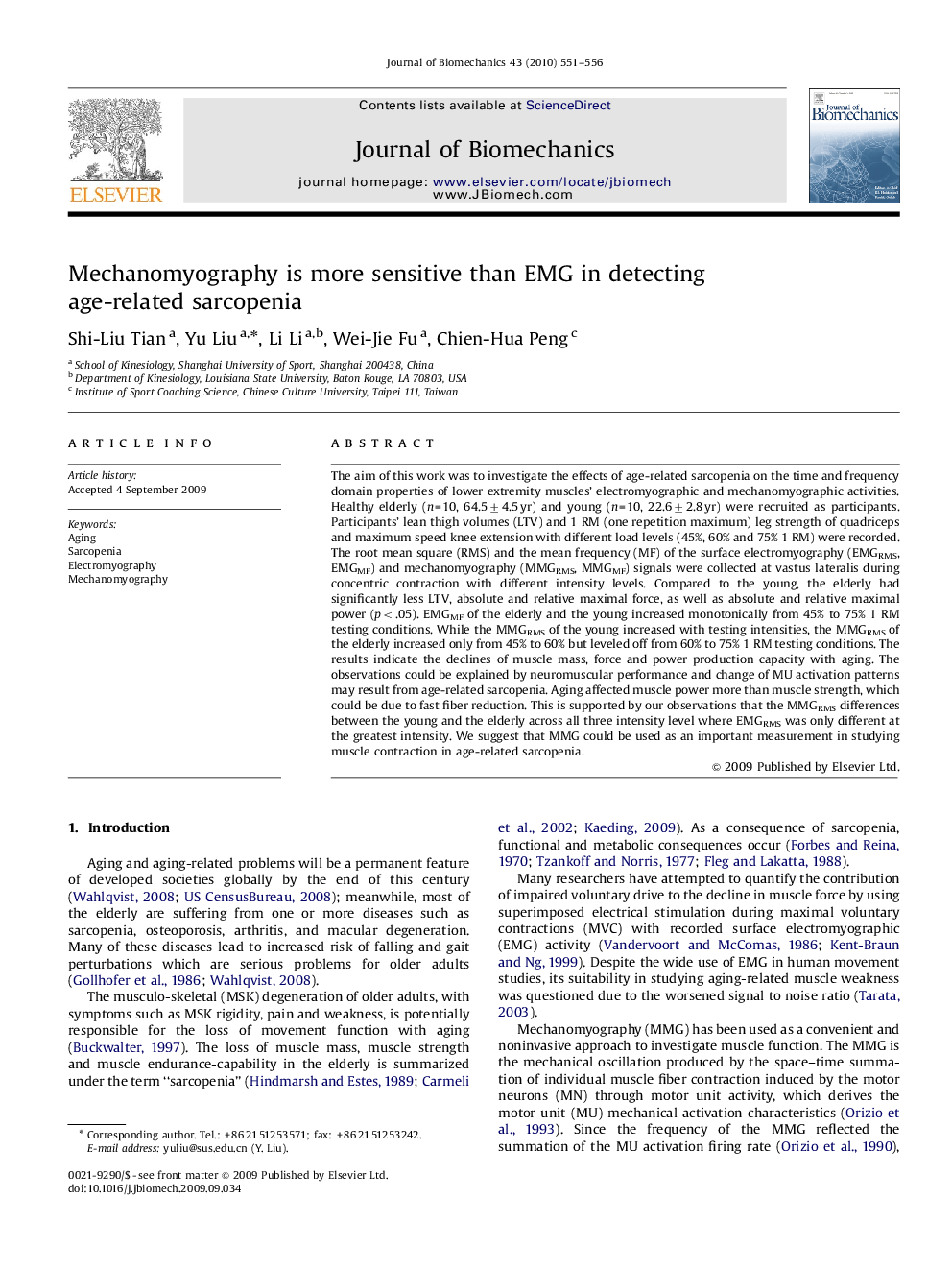| Article ID | Journal | Published Year | Pages | File Type |
|---|---|---|---|---|
| 872740 | Journal of Biomechanics | 2010 | 6 Pages |
The aim of this work was to investigate the effects of age-related sarcopenia on the time and frequency domain properties of lower extremity muscles’ electromyographic and mechanomyographic activities. Healthy elderly (n=10, 64.5±4.5 yr) and young (n=10, 22.6±2.8 yr) were recruited as participants. Participants’ lean thigh volumes (LTV) and 1 RM (one repetition maximum) leg strength of quadriceps and maximum speed knee extension with different load levels (45%, 60% and 75% 1 RM) were recorded. The root mean square (RMS) and the mean frequency (MF) of the surface electromyography (EMGRMS, EMGMF) and mechanomyography (MMGRMS, MMGMF) signals were collected at vastus lateralis during concentric contraction with different intensity levels. Compared to the young, the elderly had significantly less LTV, absolute and relative maximal force, as well as absolute and relative maximal power (p<.05). EMGMF of the elderly and the young increased monotonically from 45% to 75% 1 RM testing conditions. While the MMGRMS of the young increased with testing intensities, the MMGRMS of the elderly increased only from 45% to 60% but leveled off from 60% to 75% 1 RM testing conditions. The results indicate the declines of muscle mass, force and power production capacity with aging. The observations could be explained by neuromuscular performance and change of MU activation patterns may result from age-related sarcopenia. Aging affected muscle power more than muscle strength, which could be due to fast fiber reduction. This is supported by our observations that the MMGRMS differences between the young and the elderly across all three intensity level where EMGRMS was only different at the greatest intensity. We suggest that MMG could be used as an important measurement in studying muscle contraction in age-related sarcopenia.
